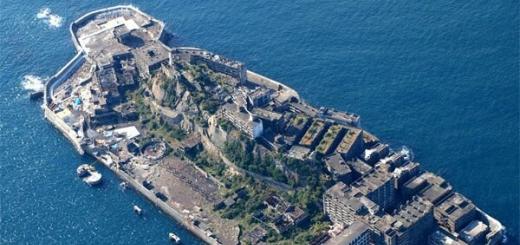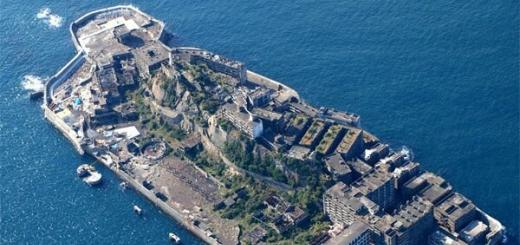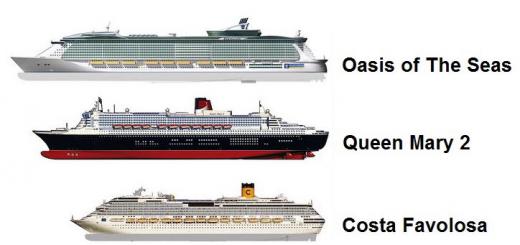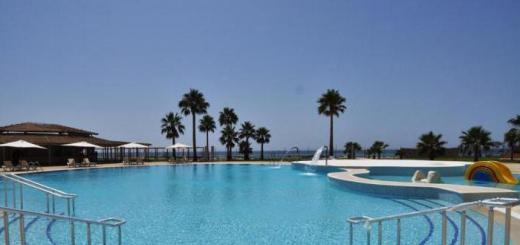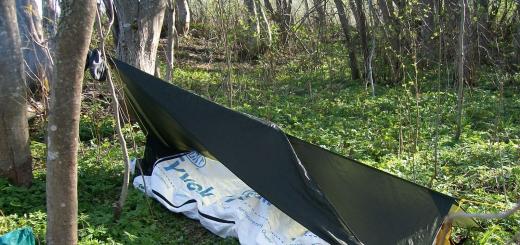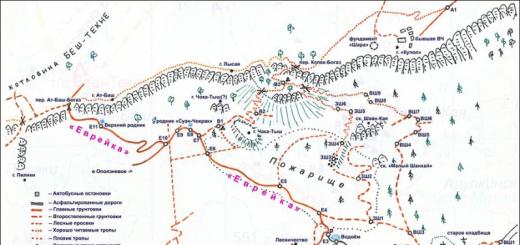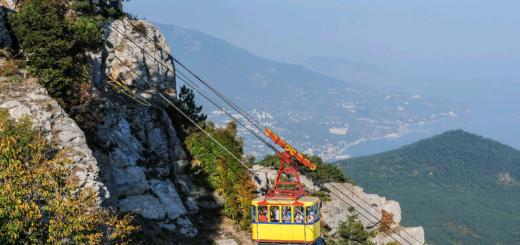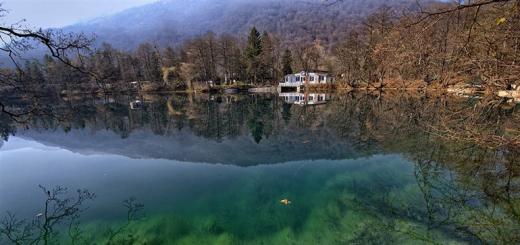Autumn is the time to take a vacation for lovers of non-trivial rest. It was at this time that connoisseurs of architecture will be able to admire the beauty of European castles. And let them say that there is nothing more tiresome than going to museums, the mystical castle, immersed in the colors of autumn, will make you forget about all the stereotypes. We will visit the Peles Castle in Romania.
Beautiful Romania, one of the most beautiful European countries, abounds in castles. And besides the castle of Count Dracula, tourists should turn their eyes to the Peles Castle, because of its rich architecture, beautiful parkland and interior decoration.
The castle found its refuge in a very picturesque place, on the territory of the Carpathians. A river flows next to it, after which the castle was named. Peles, thanks to its vast territory, looks very impressive. Perched on a mountain and buried in greenery, it is hard not to notice it, especially if you keep your way from the city of Sinai or Bucharest.
Peles Castle is currently a historical monument, but this was not always the case.
King Karol I, probably competing with other kings in originality and at the same time not wanting to spend a fortune on the construction of his summer residence, wanted to get from the architects a proposal that would combine uniqueness and economy. Having abandoned many ideas, he finally approved the idea of a certain Schultz, an architect who decided that in order for a picky king to like the castle, it should be made not in one, but in different styles. As a result, the project turned out to be very solid. Here the Rococo style is mixed with Baroque and Renaissance, and the general style of the castle is described by historians as Neo-Renaissance. Peles was built from 1873 to 1914.

Aesthetic, elegant, memorable. Due to the mixing of styles, it looks very organic at different times of the year.

Despite the fact that the construction of the castle began at the end of the 19th century, very advanced technologies existed even then. And where to use them, if not for the residence of the king. Peles Castle, the first in Romania, was equipped with electricity, an elevator and even a cinema. Other castles were at that time devoid of such amenities. The construction of the castle was completed in 1914.

But the royal family could not enjoy its beauty for long. Already in the middle of the 20th century, almost all the decoration and premises as a whole were transferred to state ownership and declared a museum, its exhibits were partially located in Bucharest. The castle was open now for tourists, now for the rest of important people, it was closed and again given to the royal family, who subsequently sold their house for several million euros. As a result, the castle became a museum and opened its doors to connoisseurs of beauty.
External design
As already mentioned, in addition to the castle itself, the area around it deserves attention. This is a park ensemble with many fountains. The park is decorated with statues. In particular, tourists at the entrance are greeted by a marble statue of King Karol I, and a little in the back there is a monument to his wife.

Also, at the moment, the park is equipped with many lanterns, which in the evening beautifully illuminate the terraces with statues and sculptures, and you can walk through the territory both along stone paths and along small stairs. The landscape of the territory deserves special attention. The castle is surrounded by a beautiful garden, created in the classic French style.

Interior decoration of the castle
In addition to the fact that the castle itself is externally executed in different styles, the architects also adhered to this rule in the interior design of the premises. The castle has more than 150 living rooms and more than two dozen restrooms. The halls are designed in a variety of styles. Some ideas are borrowed from Turkey, others from Florence and many other countries.

The decoration of the rooms as a whole looks quite expensive. Here you can see a large number of oriental carpets and tapestries, porcelain and leather, and ivory and ebony take a separate place in the interior. Which is very strange, in view of the fact that initially they wanted to save money on construction, and, therefore, on decoration. Tourists should pay attention to the library, which is still filled with rare books, the hall with weapons and the room of King Karol, in which the interior has not been changed posthumously.

For an easy perception of the interior of the castle, it can be represented as follows:


Tourist guide
The museum can only be visited with a guided tour. Tour guides recruit groups and from different parts of the castle you can hear their speeches in different world languages. Not all rooms are available for viewing, but those that are open are available for visiting from Wednesday to Sunday from nine in the morning to five in the evening. The cost of the visit depends on the time of the excursion. The maximum cost, excluding the photo, is seventy lei, that is, one thousand one hundred thirty-six rubles.
I love palaces. This is not only an opportunity to feel like a nonentity to see the life of kings, but also a chance to see a large number of outlandish gizmos. Today we are going to the Peles palace castle, where the king of Romania lived. And I have to tell you a really cool hut! The boys knew how to live well, and I declare with confidence that if you have not been to Peles, you have not been to Romania at all, or rather, you have not learned anything about it. After all, there ...However, first things first 🙂
How to get to Sinaia and Peles castle
My journey started from the capital of Romania -. I have already written about him earlier. It was in Bucharest that I got on one of those ugly, pop-eyed locomotives and rushed to a small mountain town.
However, I did not have to yawn: the trains were passing, so I looked both ways so as not to pass my stop.
Advice from Gava! The peculiarity of the railway roads of Romania is that tickets can be bought online. You buy online - the price is much lower. I advise you to go to the site and find out the terms of purchase. It is better to go early in the morning to see everything and leave in the evening for the next city of Romania - Brasov.
 It was sad on the platform in Sinai, the city met with rain. But not for long!
It was sad on the platform in Sinai, the city met with rain. But not for long!  Romanian locomotive with eyes turned out to be very comfortable inside
Romanian locomotive with eyes turned out to be very comfortable inside
Excursions here
If you want a tour of the sights of the cities of Transylvania, including Sinai, then here are a couple of the most popular ones:
Mountain town of Romania - Sinaia
Here we are. As you may have already noticed, Sinai is a word that is well known to Russians who visit Egypt, because there is also Sinai there, and this coincidence is not accidental.

Sinaia today is a popular ski resort
The Egyptian and Romanian Sinai are closely related, because in the 17th century, the Romanian prince Mikhail Cantacuzino made a pilgrimage to the holy places of Jerusalem, Nazareth, and also visited the Sinai Peninsula, where he visited the Monastery with the Church of St. Catherine. Inspired by the extraordinary beauty of the monastery, the prince built something similar in his country. So, back in 1695, the Sinai Monastery appeared in the mountains of Romania.
It's funny that no one from Russia sells tours to Romania. Everyone sells tours to Transylvania.
Sinai later became a city. And now it is a ski resort with stunning landscapes and interesting architecture, somewhat reminiscent of Bavarian buildings. It is cozy, clean and beautiful here.


We went to the Peles castle, moving our mustache along the way and capturing interesting architecture.


 The architecture in Sinai is really unusual. It's a mix of styles ...
The architecture in Sinai is really unusual. It's a mix of styles ...  ... during the English Renaissance, German Baroque and French Rococo. At least shoot a movie!
... during the English Renaissance, German Baroque and French Rococo. At least shoot a movie!
Sinaia monastery
My way to the Peles Palace went through the famous monastery. As I wrote above, it was thanks to him that the city received such a name. The monastery itself is known for the fact that, firstly, it was the very first electrified in Romania, and, secondly, it has a huge bell weighing 1700 kg. It is located on the bell tower-gate.

There is a legend: when the Turks came to plunder Transylvania, they reached Sinai. The monks did not want to be plundered, so they collected all the gold and valuable things, put it under the bell, and removed the bell itself. The Turks came, saw that the monks were some kind of rogue, did not think to raise the bell of 1700 kg, and left with nothing. So the monks kept their charm.

Advice from Gava! The entrance fee to the monastery is 5 lei. Now everyone who is not lazy makes money on everything. But! If you get there too early, there will be no one at the entrance, you can go in and look just like that. By the way, this applies to all open complexes in Romania. Came early - passed for free. Take note 🙂


From the monastery to the Peles palace, I found a wonderful pedestrian path, along which I advise you to walk too: wonderful views open up, and the path here is the shortest, you don't need to make a huge detour. In addition, various souvenirs and sweets will be sold along the way.

Peles Castle. Who gets up early, the Russian guide!
And here he is - Peles Castle. You can also call it a palace - it is really beautiful! This miracle of architecture was built at the beginning of the 20th century for King Carol I.

A bit of Wikipedia: King Karol I (1839-1914) first visited these places in 1866, they reminded him of his native Germany, and he was forever captivated by them. In 1872, these lands (approximately 5.3 sq. Km) were bought by the king, and began to be called By the royal domain of Sinai destined to become the royal hunting grounds and summer residence of the monarch.
The first three architectural designs of the castle actually copied other Western European palaces, and Karol I rejected them because they were too expensive and not original enough. Architect Johann Schulz presented a more interesting project that pleased the king: a small palace or, rather, a spacious Alpine-style mansion, combining Italian elegance with the aesthetics of the German Neo-Renaissance. The construction cost (between 1875 and 1914) was estimated at approximately 16 million Romanian gold lei (approximately 120 million US dollars today).

The castle is open daily from 9 am to 5 pm, Wednesday to Sunday. The cost of one floor is 20 lei / person, for two floors - 50 lei / person. Photo and video filming - 30 lei. Entry in strictly organized groups.
Having decided on the choice of style, the castle was built. It took several years to build. And then his ordeals began: originally intended to become “the cradle of a dynasty, the cradle of the nation”, the castle did not fulfill its purpose, and it was nationalized, made a museum.
Under Ceausescu (the communist dictator of Romania, if anyone did not know), he was generally closed to the public. After the “Romanian Revolution” of 1989, it was reopened to the public. And in 2006 he was returned to the royal house of Romania. King Micah (who is still alive and lives in Bucharest in his small palace) made a museum out of it. Now it is open to tourists for almost a whole year, except for November.
There is a very beautiful palace and park complex in front of the palace. Not Versailles and Peterhof, of course. But very nice and cozy. Be sure to go
 Who gets up early, ...
Who gets up early, ...  ... then a Russian guide 🙂
... then a Russian guide 🙂
There is also a monument to Elizabeth, the wife of Carol I. As the guide told us, she was very fond of needlework, so the moment when she is embroidering is captured in the statue. Probably darning her husband's socks 🙂

Elizabeth the needlewoman. Sews socks for her husband 🙂
The entrance to the castle is only by organized groups with excursions. Unfortunately, singles are not allowed at all.
As for the cost, only two floors can be visited in the castle itself. The third is still closed. Therefore, tickets are divided by price. Those who want only 1 floor - 20 lei per person, 2 floors - 50 lei.
I strongly advise you to take over 50! You will not regret it and see all the delights of the complex. Photo and video filming is also for an additional fee - 20-30 lei.
Students and female students. Take your student ID - instead of 50 lei you will pay 12 lei. The savings are huge! Cashiers do not really look at what is written in it, but check the fact of availability (not like in the Parthenon in Athens, everything is checked thoroughly there)
There is one Russian speaking guide. By the way, the group that I joined was lucky ofigenski and we got to him. Why? And who gets up early, that ... excursion in Russian 🙂 Well, let's go to watch?


Peles Castle. Who was the king hiding from?
The Russian-speaking guide (we were surprised by her Russian, on which she even joked) gave a very good excursion. I, as a mouse, have seen a lot of things, I definitely recommend.

Fotkal on sneakers in economy mode, so sorry.
 The ceiling in the castle is modeled on the ceiling in the Palace of Parliament.
The ceiling in the castle is modeled on the ceiling in the Palace of Parliament.  However, this ceiling also slides open for ventilation!
However, this ceiling also slides open for ventilation!
As a male mouse, I really liked the weapon room. The king is simply the best! Collected cool things from all over the world: here and sabers, halberds, armor of Europe and Asia. There are even from Africa! I walked straight with my mouth open, my mustache did not move. They also froze from the exposure.


The palace is very beautiful inside, each hall is decorated in its own way and is very interesting. For example, a library. Needless to say, there is a secret passage behind the books to the king's bedrooms. Quoting the guide: “The king was very fond of hiding. Especially from the queen ... ”(sly smile). I don't know why he was hiding from her. Maybe he didn’t want to measure sewn socks.
 - Dear, I sewed you new socks! ...
- Dear, I sewed you new socks! ...  ... And in response, silence 🙂
... And in response, silence 🙂
In addition to its inner beauty, the palace was truly innovative and ahead of the rest. As I said before, Peles Castle was the first electrified building in Romania. The whole city of Sinai, by the way, is similar. The elevator is still (!) Working here. Just 120 years old. The elevator has been operating for 120 years! But that's not all.
 There is also a boiler room that heats the entire castle (air ducts with warm air blow directly on you when you walk along the corridors). And Karl, you won't believe, but there was a vacuum cleaner that works too!
There is also a boiler room that heats the entire castle (air ducts with warm air blow directly on you when you walk along the corridors). And Karl, you won't believe, but there was a vacuum cleaner that works too!
There are special sockets along the corridors, where the tube from the vacuum cleaner was connected and the castle workers could vacuum the fleecy surfaces.
In general, this is so far the best that I have seen in castles of this format. Definitely a must. If you have not been to Peles, you have not been to Romania.
Peleshor Castle
After enjoying the beauty of Peles with might and main, we went to the Peleshor castle, which is located nearby. Compared to his big brother - Peleshor, of course, lags behind. It was built by King Carol I for his heir, Prince Ferdinand. It is less pretentious, and quite small.
 You can already walk here on your own, without a guide. Those who wish - an audio guide to help, which I took and, to be honest, regretted it. There are a lot of blunders and other absurdities, so I do not advise you to take it. Walk around and see for yourself.
You can already walk here on your own, without a guide. Those who wish - an audio guide to help, which I took and, to be honest, regretted it. There are a lot of blunders and other absurdities, so I do not advise you to take it. Walk around and see for yourself.


And this is considered the most beautiful room - the golden room of Peleshor. On the ceiling is the monogram of the royal couple, and all the walls are covered with gilded carvings:

- The cost of the trip from Bucharest to Sinai - lei. The whole way is about 120 km or 2 hours of your time. The train rushes with the breeze, the seats are comfortable for the priests, soft.
- The entrance fee to the Sinai Monastery is 5 lei. Came early in the morning - passed for free.
- Entrance to the Peles castle - from 20 to 50 lei, depending on the program (how many floors you go). Discounts for students. There is a student one, take it by all means!
- You can eat in the city center. There are many cafes and a huge supermarket. On average - 30-50 lei per person (the town is tourist, therefore the prices are higher than in Bucharest)
- It is better to take train tickets online - because they are cheaper.
Class
More wonderful travel reviews!
The weather in the mountains has two pieces of news in store for us. The good news is that the views, thanks to the low-loving clouds, were just like illustrations to Brem Stoker. And the bad news is that a fair amount of rain was applied to the clouds and views, which did not encourage walks.

The rain, when approaching Sinai, turned into a real flood. Therefore, despite the breathtaking views, we trotted up to the palace and chose to immediately start examining the interior :)

The palace was built at the end of the 19th century, remarkably preserved during the years of communism, despite the fact (or thanks to) that Ceausescu did not like it and never used it as a personal residence. Now it is open to tourists.

At the entrance, we willingly put on dry museum shoe covers and shuffled inside :)

Inside, the Peles Castle is somewhat overwhelming. Mass of dark wood, all surfaces are carved and decorated with numerous bas-reliefs and sculptures.

The ceiling in the large hall immediately reminded us of the glass ceilings of the Palace of Parliament. Edward, confirming our observation, said that the ceilings in the Parliament were made according to his model, and the construction of the ceiling in Peles, despite its age, is even more perfect, allowing it to move apart for ventilation.

Now the Palace is in the process of transferring it to its rightful, historical owner - King Mihai, heir to the Romanian Hohenzollern-Sigmaringen dynasty ...

The castle has fully preserved its furnishings, including a collection of weapons, numbering over 4,000 items!

Among them is a complete set of equestrian knight armor.

And the oldest set of armor seems to be from the 14th century.

The collection includes samples of Western and (probably trophy!;)) Eastern weapons - combat, hunting and even ritual.

But the castle rooms are not limited to the armory. For example, the castle library.

Here, behind one of the shelves, there is a secret passage to the king's boudoir. You can't see him in the photo - he's secret! :)

Music salon. Here, visiting the royal couple was, among other celebrities, already familiar to us from Bucharest, George Enescu.

Enfilade of halls for receptions. The Florentine room is decorated with luxurious Murano crystal chandeliers.

Dining room in German style. A fully server table is waiting for the royal banquet :)

The suite is closed by the Moorish Hall with a collection of oriental weapons.

Turkish Hall - Incense Burner.

Instead of a home theater - a modest royal home theater!

As we examined the castle, the rain had subsided slightly.

The courtyard is guarded by dogs!

I really wanted to take a walk in the garden, but the rain kept letting on again, urging us forward. I had to confine myself to the view from the terrace and go short dashes to the Peleshor Palace, located very nearby.

Peleshor Castle was built by order of King Charles I, for his heir, the future King Ferdinand and his wife, Queen Mary. It is less luxurious than peles, since we had nowhere to rush, and it made sense to postpone the inspection of the streets of Brasov until better weather, we decided to look at Peleshor from the inside.

For some reason, in my mind, Romania has always been associated with dragons. In the lobby of the castle, we met the first (of two :)) Romanian dragon ... True, he was no longer in his best shape ...

In this castle, a lot bears the memory of its former mistress - Queen Mary.

Peleshor Castle is not at all as grandiose as its older brother. Many modest rooms in a style reminiscent of Art Nouveau are open for inspection, which look much more comfortable than the rooms of Peles. I will not bore you with a bunch of photos of the situation, I will limit myself to only two of the rooms we like the most.

Queen Mary Studio. One of the rooms that preserves the presence of the hostess. Not a ghost obligatory for a Gothic castle, but just an image of a living, real woman ..

The most luxurious room in the castle is the Golden one. All walls are covered with solid gilded carvings. On the ceiling there is a Celtic cross - the symbol of Queen Mary. At her request, the last hours of her life passed in this room.

And here it is :) Looking ahead, I will say that he showed himself to be an excellent organizer, guide and translator, for which he repeatedly suffered for us in many museums, castles and even in supermarkets!

After visiting Peleshor, we went to check in to the hotel, where we planned to stay during our entire stay in Romania. You can take a look at Vila Crocus, find out if the continuous rain has stopped tormenting us and go with us on a trip to Southern Bukovina!
And if you want to get a better look around the castle, you can do it at our friend offreal
in his story about Sinai and Peles!
In this entry:
Rain and "Transylvanian" landscape.
Peles' ceremonial halls.
Home comfort of Peleshor.
Located at the foot of Mount Bucegi in the picturesque town of Sinaia, Peles Castle (Romania) is a masterpiece of German Renaissance architecture, and is considered by many to be one of the most beautiful castles in Europe.
After Peles, it is considered the second most visited museum in the country. In 2006 alone, two hundred and fifty thousand visitors from the countries of the former Soviet Union, as well as the United States of America, Australia, Japan and New Zealand crossed its threshold.
The importance of the castle is also emphasized by the existing security measures - the presence of a large number of guards and video cameras.
Short story
The construction of Peles Castle began in 1873 by order of King Karol I, under the direct supervision of the Viennese architect Wilhelm Doderer, and continued until 1876 by his assistant Johann Schulz de Lemberg. During the war (1877-1879) the builders refused to work. Therefore, the castle was opened only on October 7, 1883. It was supposed to serve as the summer residence of the royal family. Until 1947, he performed this function.
(photo above) became the first European castle to have heating and electricity. His own power plant was located on the banks of the Peles Brook.
The castle occupies three thousand two hundred square meters, and the height of each tower is sixty-six meters.
Castle interior
Peles Castle has one hundred and sixty fully furnished rooms. This includes bedrooms, armory, libraries, offices, game rooms (for playing cards), thirty bathrooms, a hall with a hookah, galleries, teahouses, children's playrooms, conference rooms, breakfast rooms, dining rooms, kitchens. And that's just the main part.

Each of these rooms, as well as the halls and hallways, are individually decorated. Therefore, when you walk around the castle, you don't even know what style awaits you at the next door. Decor ideas were taken from Turkish, Venetian, Florentine, French, Moorish and other styles.
The interior of the castle strikes with spiral staircases, internal balconies, massively decorated mirrors, countless statues, doors that are hidden inside cabinets, a glass roof that opens in summer, and so on.
Today, only about ten rooms out of the total number can be visited by tourists.
What can tourists see on excursions?
The first room you enter is the lobby. Its walls are decorated with carved walnut panels.

- Royal Library. Here is a collection of rare valuable books, some even in leather covers with engraved gold letters. Even in the library, in one of the cabinets, there is a secret door through which, according to legend, the king could get into different rooms of the castle.
- Music room. All the furniture that was used to furnish the room was a gift from the Maharaja Kapurthala.
- The common room, called Florentine, impresses with its carved linden ceiling, two gilded chandeliers and Italian Neo-Renaissance decorations. Doors for her were specially ordered and brought from Rome.
- A meeting room that resembles one of the city halls in
- A cabinet with an impressive writing desk.
- Canteen. It is decorated in a rustic 18th century British style.
- Guest room in Turkish style. Within its walls is a collection of Turkish and Persian brass pots. It used to be a place for rest and pipe smoking.
- The bedroom is lit by a chandelier.
- The auditorium for sixty seats, which is decorated in the French style of the times of Louis XIV. Since 1906, it has become a home theater. The ceiling paintings and decorative frescoes were painted by renowned Austrian artists Gustav Klimt and Franz Match.
- Moorish living room. It got this name due to the fact that it is decorated in a mixed style - Spanish-Moorish and North African. The interior of the living room is somewhat reminiscent of the Alhambra palace in Grande (Andalusia).
Some of the rooms and corridors are decorated with stunning stained glass windows, which were purchased and installed between 1883 and 1914. Most are brought from Switzerland and Germany.
Tourists can also walk along seven terraces, which are decorated with stone sculptures, marble fountains and decorative flower pots.
Tourists are also invited to take a walk on the territory of the castle. The landscape design style has remained the same, and numerous fountains work to this day.
Armory
The armory, which is called the hall of European weapons, deserves special attention. All the weapons that are here are decorated with gold, silver, corals and various precious stones. The hall was built from 1903 to 1906, and it is decorated in the neo-Renaissance style.

In total, the collection contains more than four thousand pieces of hunting equipment, military weapons and knightly equipment. All of this was collected between the fifteenth and nineteenth centuries. Tourists can familiarize themselves with such weapons and uniforms as chain mail armor, helmets, scimitars, daggers, spears, muskets, pistols, shields, axes and so on.
Some items were received as gifts from India from numerous friends of the king-emperor.
Working hours
You can visit the Peles Castle (Romania), the photo of which is presented below, on the following days and hours:
- from June to September - from Tuesday to Sunday (from 10 am to 4 pm), day off - Monday;
- from October to May - from Wednesday to Sunday (from 10 am to 4 pm), weekends are Monday and Tuesday.
The museum is closed in November.
Location

The address where Peles Castle is located is Sinaia, 2 Peleshelni Street, Wallachia, Southern Romania.
Nearest major cities:
- Brasov - 65 kilometers (40 miles) north;
- Bucharest is 129 kilometers (80 miles) south.
The nearest railway station is Sinai.
Entrance fees:
- total - 20 lei;
- pensioners - 10 lei;
- students - 5 lei.
An additional fee is charged for photo and video filming: 30 and 50 lei, respectively.
It is better to check all prices at the box office, which is located right at the entrance to the castle.

